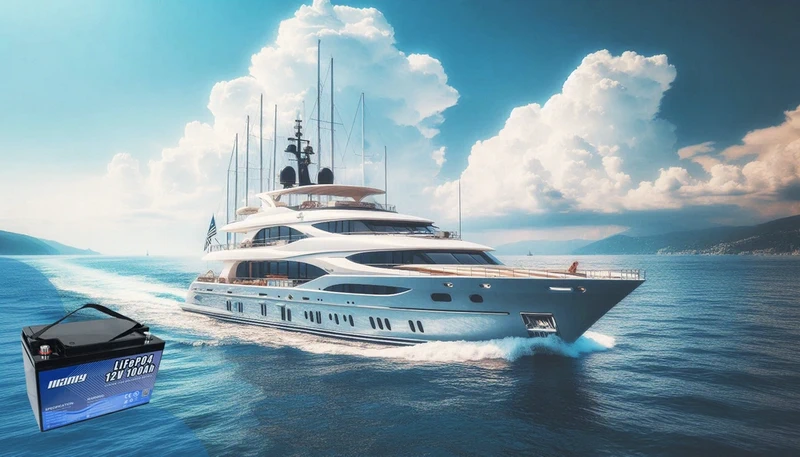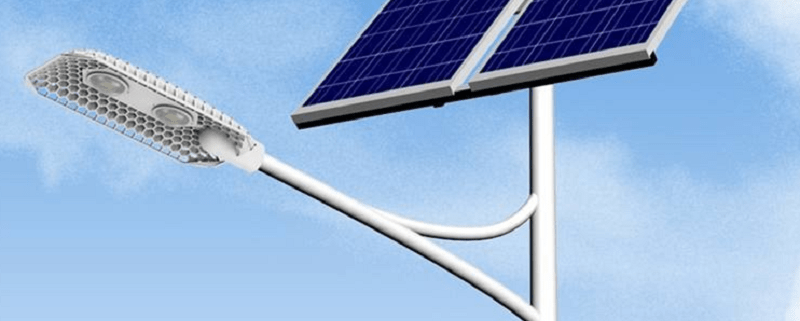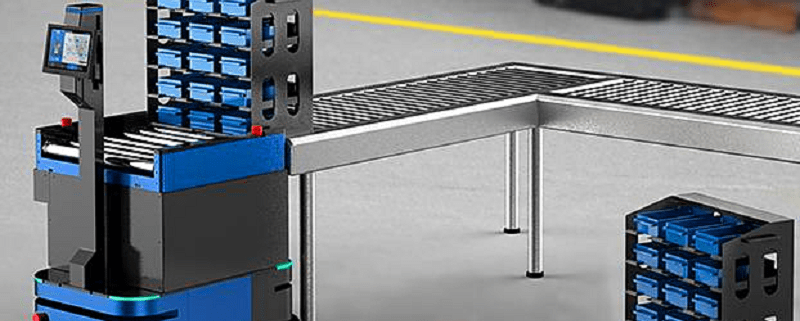Charge a Marine Battery: Step-by-Step Guide
Table of Contents
- Charge a Marine Battery: Step-by-Step Guide
- Understanding Marine Batteries
- Preparing to Charge Your Marine Battery
- Step-by-Step Guide: How to charge a marine battery
- Best Practices for Marine Battery Maintenance
- Conclusion
- FAQ
- Hot Resarch
- The composition of solar lamps
- Main Components of Electric Vehicles-“Four Major Parts”
- What are the advantages of AGV
Marine batteries are the lifeblood of any boat—they power your engine, lights, gauges, and all the essential onboard electronics. Without a healthy battery, your boat is a pretty shell on the water. In this article, we dive into the burning question: how do I charge a marine battery? We’ll explore everything from the ins and outs of battery types to a step-by-step guide on charging. Plus, we’ll compare the advantages of a marine li ion battery with those of traditional marine deep cycle batteries. Let’s get started on this exciting journey to keep your boat powered and your adventures safe!
Understanding Marine Batteries
1. Types of Marine Batteries
Not all marine batteries are created equal. When it comes to powering your boat, you typically have three choices:
- Starting Batteries: These provide that quick, powerful burst of energy to get your engine running, but they’re not built for long-term power.
- Deep Cycle Batteries: Designed for sustained power delivery, these batteries keep your lights, electronics, and other accessories humming for hours.
- Dual-Purpose Batteries: These offer a blend of starting and deep cycle capabilities, which can be handy on smaller vessels with limited space.
Most boaters prefer marine deep-cycle batteries for extended use and reliability. These batteries handle deep discharges better, ensuring their boats stay powered even during extended trips.
2. Battery Chemistry and Technology
Battery chemistry plays a pivotal role in performance and longevity. Traditional chemistries—like lead-acid, AGM, and gel—have long been the go-to options. However, a modern contender is changing the game: the marine li ion battery.
Why choose a marine li ion battery? Because it’s lightweight, lasts significantly longer, and requires minimal maintenance compared to conventional batteries. Think of it as upgrading from an old clunker to an award-winning sports car in the world of batteries. This cutting-edge technology improves performance and enhances safety and efficiency, making it a popular choice among serious boaters.
Learn more about lithium-ion battery technology on Wikipedia.
Preparing to Charge Your Marine Battery
Before you begin the charging process, a little preparation goes a long way toward ensuring safety and efficiency.
1. Assessing Your Battery’s Condition and Type
First, give your battery a thorough once-over. Check its age, inspect for any signs of corrosion, and verify the battery type. Understanding whether you’re dealing with a marine li ion battery or deep cycle batteries is crucial—it influences which charger to use and how you’ll maintain it. A well-maintained battery lasts longer and performs better when you charge a marine battery.
2. Choosing the Right Charger
Next up is selecting the correct charger. You generally have two main options:
- Onboard Chargers: Permanently installed on your boat, these chargers make it super convenient to power up as long as you have access to a standard outlet.
- Portable Chargers: These allow you to charge your battery wherever you are, which is ideal for smaller boats or when space is at a premium.
Make sure the charger you choose matches your battery’s chemistry and voltage. This step is especially important for those opting for a marine li ion battery or deep cycle batteries—using the wrong charger can lead to underperformance or even damage.
3. Safety Precautions Before Charging
Safety should always be your top priority. Here are some key precautions:
- Work in a Safe Environment: Charge your battery in a well-ventilated area and ensure the temperature is within the manufacturer’s recommended range.
- Clean Battery Terminals: Dirty or corroded terminals can interfere with the charging process, so give them a good clean before you connect anything.
- Gear Up: Wear protective gear such as gloves and eye protection to prevent mishaps.
- Follow Manufacturer Guidelines: Always adhere to the specific recommendations provided by your battery and charger manufacturers.
By taking these simple steps, you will ensure your safety and optimize the performance and lifespan of your battery.
Step-by-Step Guide: How to charge a marine battery
Let’s get into the nitty-gritty of charging your boat’s power source. Follow these steps, and you’ll power up like a pro in no time!
1. Cleaning and Inspecting Battery Terminals
Before you plug anything in, clean your battery terminals. Dirty or corroded terminals can prevent your charger from doing its job, and no one wants a slow charge on a hot day!
- Tip: Mix some baking soda with water, scrub gently with a soft brush, and wipe dry.
- Why It Matters: Clean connections ensure that every bit of energy flows efficiently when you charge a marine battery.
2. Connecting the Charger
Now, let’s hook everything up:
- Positive (Red) Cable: Firmly attach this to the positive terminal.
- Negative (Black) Cable: Connect it securely to the negative terminal.
Double-check your connections, whether using a smart charger that adjusts the current automatically or a trusty manual charger. This step is vital, especially when working with a marine li ion battery or marine deep cycle batteries. Once the cables are locked in, plug in your charger and power it up. Easy as pie, right?
3. Monitoring the Charging Process
Keep an eye on your battery as it charges—this is where modern tech shines:
- LED Indicators: These give you a quick look at the charge level.
- Smart Apps & Timers: Many chargers have apps or built-in timers to let you know when you’re full.
By actively monitoring, you prevent overcharging and ensure your battery gets the right amount of juice.
4. Disconnecting the Charger Safely
When your battery is fully charged, it’s time to disconnect—but do it safely:
- Unplug the Charger: Always start by unplugging the charger from the wall.
- Remove the Negative Cable: Disconnect the black cable first.
- Disconnect the Positive Cable: Finally, remove the red cable.
Following this order helps prevent accidental short-circuits and keeps your battery in shape.
Best Practices for Marine Battery Maintenance
Regular maintenance keeps your battery performing like a champ. Here’s how to keep those power levels up!
1. Maintenance Tips for Prolonging Battery Life
- Routine Inspections: Check for any signs of corrosion or wear on the terminals.
- Clean Regularly: A little cleaning goes a long way in ensuring your connections are solid.
- Water Topping: Top up with distilled water when needed for lead-acid batteries.
By following these habits, you’ll always be ready to charge a marine battery and hit the water confidently.
2. Optimizing Charging Cycles
Different batteries have different needs:
- For a marine li ion battery: Enjoy the benefits of minimal maintenance and the ability to handle deeper discharges.
- For marine deep cycle batteries: Stick to regular, shallow discharges to keep them healthy over the long haul.
Tailoring your charging cycle to the specific battery type maximizes performance and extends lifespan.
3. Troubleshooting Common Issues
Even the best-maintained batteries can run into issues. Watch out for:
- Overcharging: This can overheat your battery and cause damage.
- Undercharging: Leaves your battery underpowered.
- Terminal Corrosion: Hinders efficient energy transfer.
If you notice any problems, check your charger settings and ensure you use the right equipment for your battery type.
Conclusion
1. Recap of Key Points
We’ve broken down how to charge a marine battery step by step—from cleaning and connecting to monitoring and safe disconnection. Each stage is crucial for keeping your boat’s power system in peak condition.
2. Final Tips for Maintaining Both Marine li ion battery and marine deep cycle batteries
Whether you opt for the cutting-edge marine li ion battery or the reliable marine deep cycle batteries, proper care and regular maintenance are your best friends. Tailor your charging habits to your battery’s specific needs, and you’ll enjoy award-winning performance on every trip.
3. Encouragement to Follow Best Practices for Reliability on the Water
Stick to these best practices, and you’ll be cruising with confidence. Keeping your battery in prime condition means fewer hassles and more time enjoying your time on the water. Let’s keep those adventures rolling, shall we?
For more detailed battery care tips and industry insights, check out reputable sources like the U.S. Department of Energy or Wikipedia’s battery technology page. Happy boating!
FAQ
1. Can you charge a marine battery with a regular charger?
While you technically can, it’s not recommended. Marine batteries require a charger that matches their specific chemistry and voltage. A regular charger may not provide the proper charging profile, leading to undercharging, overcharging, or even damage over time.
2. What is the best way to charge a boat battery?
The best way is to use a charger specifically designed for your battery type. Follow a step-by-step process: clean and inspect the terminals, connect the positive and negative cables correctly, monitor the charging process using bright indicators, and disconnect safely when fully charged. This ensures efficiency and longevity.
3.What kind of charger do I need for a marine battery?
You need a charger that is tailored to your battery’s chemistry—whether it’s a marine li ion battery or marine deep cycle batteries. Look for chargers with the correct voltage, charging algorithm, and safety features like automatic shut-off and intelligent monitoring for optimal performance.
Hot Resarch
Marine Battery Battery Manufacturer Lithium Battery
Hello
With the development and progress of solar photovoltaic technology, it was first applied to lighting fixtures in civil applications. In recent years, due to the dual advantages of environmental protection and energy saving, solar garden lights, solar lawn lights and solar street lights have gradually been applied Form a scale.
In the design of solar lighting lamps, many factors are involved, such as light source, solar battery system, battery charging and discharging control, and any problem in any link will cause product defects.
Solar lamps are composed of the following five parts
1. Solar panels
2. Charge and discharge controller
3. Battery
4. Load
5. Lamp shell
Commonly known as the “four major pieces” that make up an electric vehicle refer to the electric vehicle battery, motor, controller and charger. The following is an introduction to the functions, structure and functions of the “Four Major Items”:
One: Electric vehicle battery: It is the power source of electric vehicle, the energy carrier, used to drive the motor, the voltage of the electric vehicle battery determines the working voltage of the vehicle, and the battery capacity of the electric vehicle is directly proportional to the continuous journey of the vehicle.
The structure of lead-acid electric vehicle batteries commonly used in electric vehicles is mainly composed of electric vehicle battery shells, positive plates, negative plates, separators, electrolytes, terminals, sealants, safety valves and other components.
The types of electric vehicle batteries can be divided into: lithium-ion electric vehicle batteries, nickel-metal hydride electric vehicle batteries, gel electric vehicle batteries and maintenance-free lead-acid electric vehicle batteries. Among them, gel electric vehicle batteries and lead-acid electric vehicle batteries are commonly used.
According to the voltage, it can be divided into 6V, 12V, 24V, 36V, 48V, 60V, 64V, etc. The most commonly used electric vehicle is 48V.
According to the capacity specifications, it can be divided into: 10AH, 12AH, 17AH, 20AH, 22AH, etc. 12AH and 20AH storage battery batteries are commonly used in electric vehicles.
Two: Motor: Converts the chemical energy of the electric vehicle battery into mechanical energy, and converts the rotational energy into mechanical traction, so that the wheels rotate. The working voltage of the motor is inversely proportional to the working current, and the power of the motor is proportional to the climbing ability.
According to the way of energization, it can be divided into brush motor and brushless motor:
A: Brushed motors are composed of iron core windings, magnetic steel sheets, carbon brushes, carbon brush holders, commutators, etc. The regular operation effect is achieved by the exchange of contact between the carbon brushes and the commutator.
B: The brushless motor is composed of iron core windings, magnetic steel sheets, Hall elements, etc. It relies on Hall (dielectric degree angle) commutation to achieve regular operation.
According to the structure, the motors can be divided into: brushless and toothless, brushless and toothless, brushless and toothed, and brushed and toothed, etc. The most commonly used is brushless and toothless motors.
According to the working voltage, it can be divided into: 12V, 24V, 36V, 48V, 60V, 64V, etc. The most commonly used is the 48V motor.
According to the power, it can be divided into: 180W, 250W, 350W, 500W, 800W, 1000W, etc. The most commonly used are 350W and 500W motors.
Three: Controller: Control the output current of the electric vehicle battery, the voltage and then achieve the control of the motor speed and power, that is, the speed of the entire vehicle, to achieve the effect of controlling the entire vehicle. The main functions include stepless speed regulation, brake power failure, current limit protection, undervoltage protection, speed limit, speed display, 1:1 power assist, etc.
According to the difference of function and structure, it can be divided into two types: brush controller and brushless controller.
According to the working voltage, it can be divided into: 24V, 36V, 48V, 60V, 64V, etc. The most commonly used is the 48V controller.
According to the output power, it can be divided into: 180W, 250W, 350W, 500W, 800W, etc. The most commonly used controllers are 350W and 500W.
Four: Charger: It is a device that supplements the energy of the electric vehicle battery to charge the electric vehicle battery. It can convert the mains electricity into direct current and control its current and voltage to charge the electric vehicle battery and store it.
The charger is mainly composed of rectifier and filter, high voltage switch, voltage exchange and electric control. The working state has three stages: constant current, constant voltage and floating charge.
A: Constant current depends on the type of electric vehicle battery;
B: Constant voltage is determined according to the standard of electric vehicle battery. Conventionally, the single-cell voltage is 14.7V—14.8V.
C:Floating charge is determined according to the standard of electric vehicle battery, and the conventional single-cell voltage is 13.8V-14V.
Advantages of AGV:
(1) High degree of automation;
It is controlled by computer, electronic control equipment, laser reflector, etc.
When auxiliary materials are needed in a certain part of the workshop, the staff enters relevant information into the computer terminal, and the computer terminal sends the information to the central control room. Professional technicians issue instructions to the computer. With the cooperation of electronic control equipment, this The instruction is finally accepted and executed by the AGV-send the auxiliary materials to the corresponding place.
(2) Charging automation;
When the power of the AGV car is about to run out, it will send a request instruction to the system to request charging (general technicians will set a value in advance), and automatically go to the charging place after the system allows it to “queue” for charging.
In addition, the battery life of the AGV trolley is very long (more than 10 years), and it can work for about 4 hours per 15 minutes of charging.
(3) Beautiful, improve the viewing degree, thereby enhancing the image of the enterprise.
(4) Convenience and reduced floor space; the AGV trolley in the production workshop can shuttle back and forth in each workshop.
In the early days, AGV trolleys could only travel in one direction during automatic operation, so the applicable environment was limited. In order to meet the requirements of industrial production, in recent years, there have been AGV products in foreign countries that can move forward and backward or even travel, forward, reverse, sideways and rotate in all directions during automatic operation. These achievements are attributed to the progress of the walking mechanism.
1. Two-wheel differential traveling mechanism This traveling mechanism has two traveling driving wheels symmetrically arranged on the front and rear centerline, and two supporting wheels are arranged at the vertices of an isosceles triangle with the fulcrum of the two traveling wheels as the base. The trolley relies on both sides of the driving wheel to steer differentially, so there is no need to set a steering wheel. The trolley has simple structure, reliable work and low cost. In the automatic running state, the trolley can move forward and backward, and can make vertical turns with good maneuverability. Compared with the four-wheel walking mechanism trolley with steering wheels, the trolley can be made smaller due to the omission of the steering wheel, which not only saves two driving motors but also saves space. In recent years, the trolley of this kind of organization has been widely used. In order to improve the lateral stability of the car body when driving, the two-wheel differential four-wheel walking mechanism can be improved as follows. The supporting wheels are increased from the original two to four and arranged at the four corners of the chassis of the trolley.
2. Three-wheel walking mechanism The three wheels of the AGV trolley of the three-wheel walking mechanism are respectively arranged on the three vertices of an isosceles triangle. The front wheel is both a steering wheel and a walking driving wheel. The two wheels behind are unpowered supporting wheels. The AGV trolley of the three-wheel traveling mechanism is simple in structure, easy to control, reliable in work, and low in cost. When the car is manual, it can forward, reverse and turn automatically. It can only drive in one direction. When turning, the trajectory of the rear wheel’s midpoint deviates from the track of the guide wire and presents a trailing line.
3. Four-wheel walking mechanism with steering wheel The four-wheel walking mechanism with steering wheel is evolved on the basis of three-wheel walking mechanism, which is equivalent to combining two tricycles together. The two supporting wheels are symmetrically arranged on the center line of the front and rear of the trolley. The front and rear wheels are respectively arranged symmetrically at the vertices of an isosceles triangle with the fulcrums of the two supporting wheels as the base. The front and rear wheels are both steering wheels and walking driving wheels. This kind of AGV trolley can travel in all directions under automatic operation. When turning, the front and rear wheels can track the trajectory of the guide wire. The maneuverability is better than that of the tricycle. It is suitable for narrow aisle work environment.
4. Other forms of walking mechanism In recent years, foreign companies have continuously researched new walking mechanisms. Among them, the symbolic one belongs to the walking organization of Sweden’s Mackanham Company. The running mechanism is novel in design and compact in mechanism. Four driving wheels are arranged on the four corners of the chassis in an articulated form. When running, the steering and speed of the four wheels are controlled separately, and the speed vector synthesis principle is used to realize driving. Later, Japan’s Mitsui Co., Ltd. cooperated with McCannham Company to make improvements on the original basis and launched the Mitsui Mackanham Wheel System, which has improved its performance. This AGV trolley can realize all-round driving.
With the rapid development of logistics systems, the scope of application of AGV is also expanding. AGV systems are researching and designing an unmanned car system solution based on electromagnetic navigation. Through actual hardware experiments, the system can meet the expected design requirements and can be widely used In the fields of industry, military, transportation, electronics, etc., it has good environmental adaptability, strong anti-jamming ability and target recognition ability.






